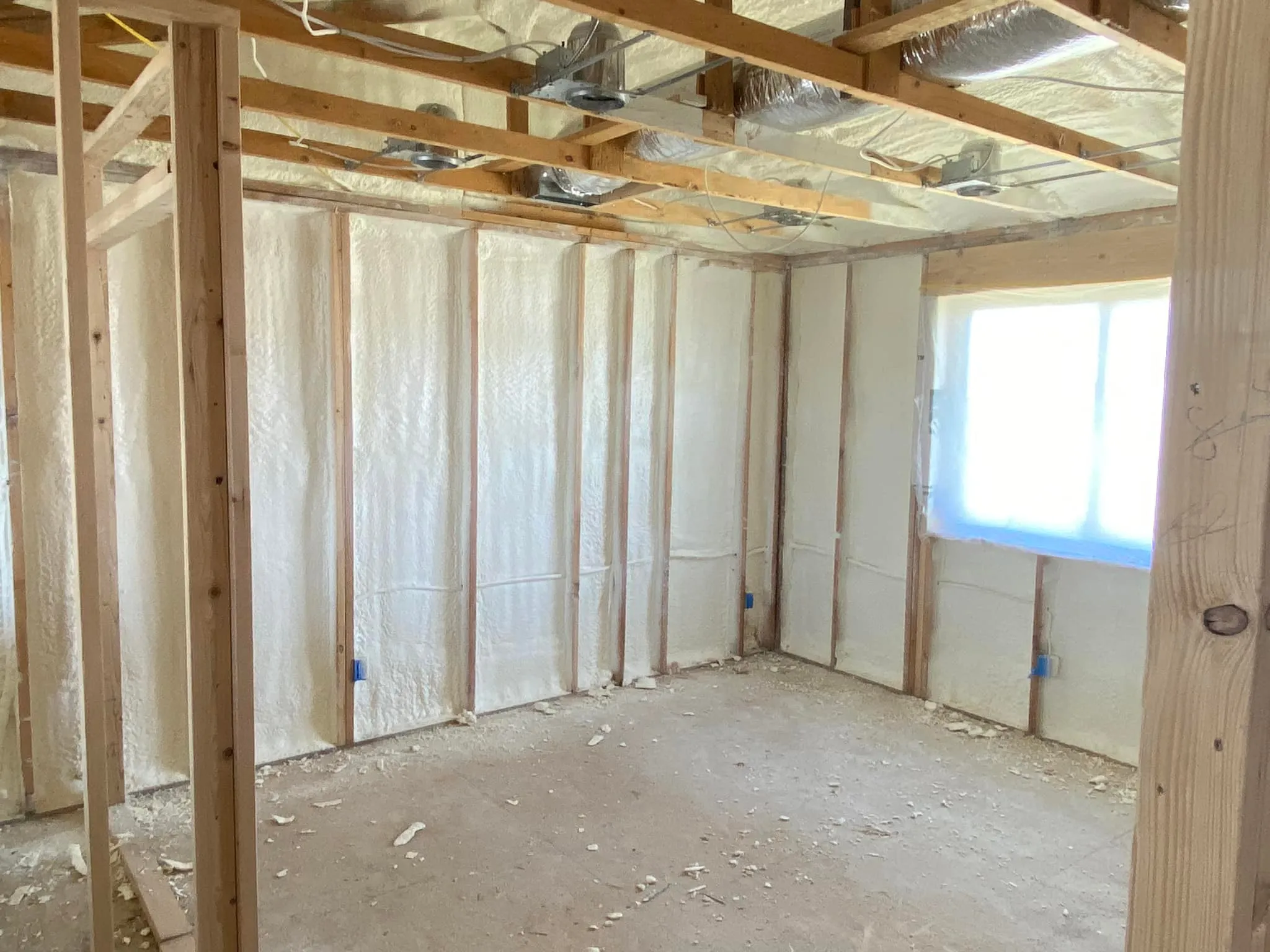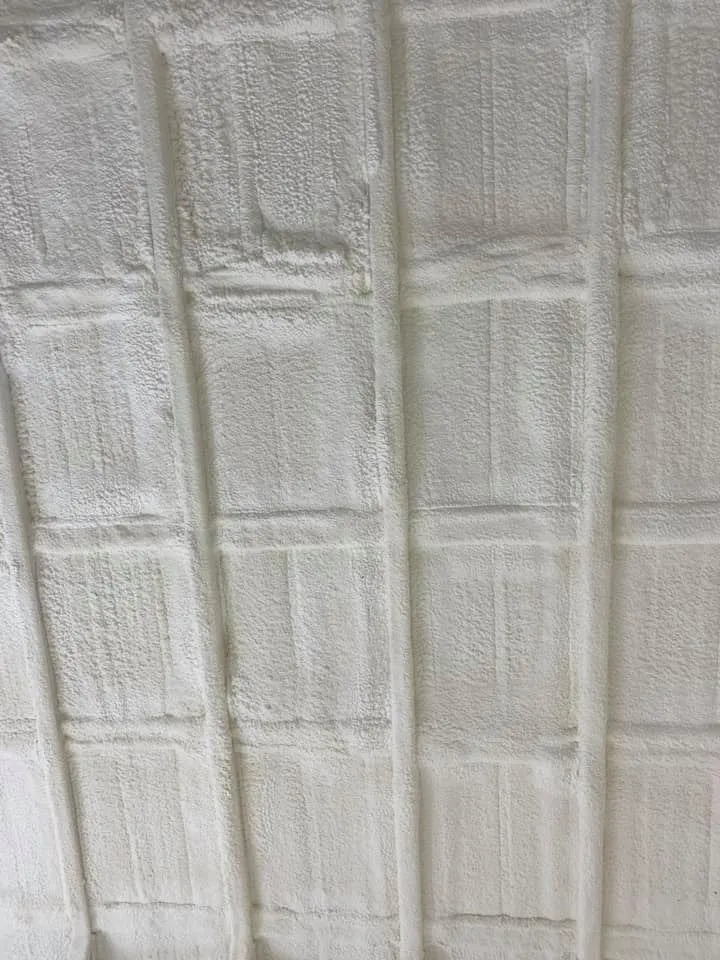
Closed-cell spray polyurethane foam (SPF) is a high-performance insulation material used for thermal insulation, air sealing, and adding structural integrity to buildings. Its primary applications are in residential and commercial construction, particularly for roofs, walls, foundations, and attics. Unlike open-cell foam, its dense, rigid structure makes it an effective barrier against air and moisture, making it suitable for locations where water exposure is a concern. This guide explains the specific uses for closed-cell foam, its technical advantages, and factors to consider before choosing it for a project. Drawing from extensive field experience, this information serves as a practical resource for understanding how this material performs in real-world scenarios.
The versatility of closed-cell foam stems from its ability to solve multiple problems with a single application: it insulates, stops air leaks, blocks moisture, and reinforces the structure it’s applied to. This effectiveness helps explain why the global spray polyurethane foam market is projected to continue its growth, a trend driven by rising energy costs and stricter building codes that demand more efficient construction materials, according to a market analysis by Grand View Research.
Before looking at specific applications, it’s useful to understand the properties that make closed-cell foam so effective. Its performance is based on four key functions:
In homes, closed-cell foam is used from the foundation to the roofline to create a well-insulated and tightly sealed building envelope.
Applying closed-cell foam in exterior wall cavities provides insulation and an air barrier in one step. It adheres directly to the sheathing and studs, eliminating the gaps common with traditional insulation like fiberglass batts. This is particularly effective in climates with extreme temperatures, as it minimizes thermal bridging and keeps conditioned air inside.
For roofs, closed-cell foam can be applied to the underside of the roof deck. This creates an unvented or “hot roof” assembly, moving the building’s thermal boundary to the roofline. This method is ideal for homes with cathedral ceilings or those wanting to use the attic as conditioned living space. It also helps prevent ice dams in cold climates by keeping the roof deck warm.
Bonus Tip: In older homes with complex rooflines or numerous dormers, spray foam is often the only practical way to achieve a complete air seal and proper insulation levels.
Basements and crawl spaces are common sources of moisture and air intrusion. Closed-cell foam is a great solution here because it’s waterproof and doesn’t absorb moisture. When applied to foundation walls, it insulates, seals air leaks from the rim joist, and acts as a vapor retarder, helping to keep these below-grade areas dry and comfortable. In flood-prone regions, its water resistance offers an added layer of protection.
The durability and performance of closed-cell foam also make it a top choice for commercial, industrial, and agricultural buildings.
Large metal buildings are notoriously difficult to insulate and are prone to condensation. Spray foam adheres directly to the metal panels, providing continuous insulation and preventing “sweating.” The added rigidity also helps strengthen the building against wind loads.
In barns, poultry houses, and produce storage facilities, maintaining a consistent temperature and humidity level is essential. Closed-cell foam provides excellent thermal control and its durable, washable surface is easy to maintain. It helps protect livestock from temperature stress and preserves the quality of stored goods.
Bonus Tip: When insulating agricultural buildings, ensure the selected foam product has a coating that is approved for incidental food contact if it will be used in food storage or processing areas.
Beyond buildings, closed-cell foam’s properties lend it to other uses. Its buoyancy and water resistance make it useful for filling and insulating boat hulls, docks, and other flotation devices. It is also used in refrigerated trucks and cold storage facilities where maintaining extremely low temperatures is necessary.

Choosing the right type of spray foam depends on the specific application. While both are excellent insulators, they have different properties that make them suitable for different jobs.
| Feature | Closed-Cell Spray Foam | Open-Cell Spray Foam |
|---|---|---|
| R-Value per Inch | 6.0 – 7.0 | 3.5 – 4.0 |
| Density | 1.8 – 2.5 lb/ft³ | 0.4 – 0.6 lb/ft³ |
| Vapor Permeability | Low (acts as a retarder) | High (vapor permeable) |
| Air Barrier | Yes | Yes |
| Structural Rigidity | High | Low (flexible) |
| Sound Dampening | Good | Excellent |
| Typical Cost | Higher | Lower |
Open-cell foam is often used for sound attenuation between interior walls, while closed-cell foam is the go-to choice for exterior applications, basements, and anywhere moisture or structural support is a factor.
To ensure closed-cell spray foam is the right fit for your project, it is essential to evaluate a few key factors.
Clearly define what you want to achieve. Is the main goal to lower energy bills, improve indoor comfort, prevent moisture problems, or add strength to an older structure? Your primary objective will help determine if closed-cell foam is the best solution or if another material might be more appropriate.
Local building codes dictate minimum R-value requirements for different parts of a building. These requirements vary significantly based on climate zone. For example, a home in Wyoming requires more insulation than one in Florida. Ensure your insulation plan meets or exceeds the standards outlined by the International Energy Conservation Code (IECC) and any local amendments.
The condition of the substrate matters. Spray foam should only be applied to clean, dry surfaces that are free of rot or damage. Any underlying moisture or structural issues must be addressed before insulation is installed. It’s also important to consider ventilation. Sealing a building envelope too tightly without a proper mechanical ventilation strategy can sometimes lead to indoor air quality issues.
Spray foam is a chemical product created on-site, and its performance depends entirely on the quality of the installation. It is not a DIY project. Always hire a certified and insured contractor who follows strict safety protocols. A professional installer will ensure the foam is mixed at the correct temperature and applied at the right thickness to deliver the promised performance.
Closed-cell spray foam offers a powerful solution for insulating, air sealing, and strengthening a wide range of structures. From residential walls and attics to large commercial warehouses, its unique combination of a high R-value, low permeability, and structural rigidity makes it an effective choice for many challenging applications. By evaluating your specific project goals, budget, and local climate requirements, you can determine if it is the right material to improve your building’s performance, comfort, and long-term durability.
Every building is different, and a proper evaluation is the first step toward an effective insulation strategy. For a detailed consultation based on your property’s specific needs, contact High Country Solutions. A professional can help you analyze your options and design a plan that delivers lasting value. Reach out via email at [email protected] or by phone at (307) 248-9063 to discuss your project.